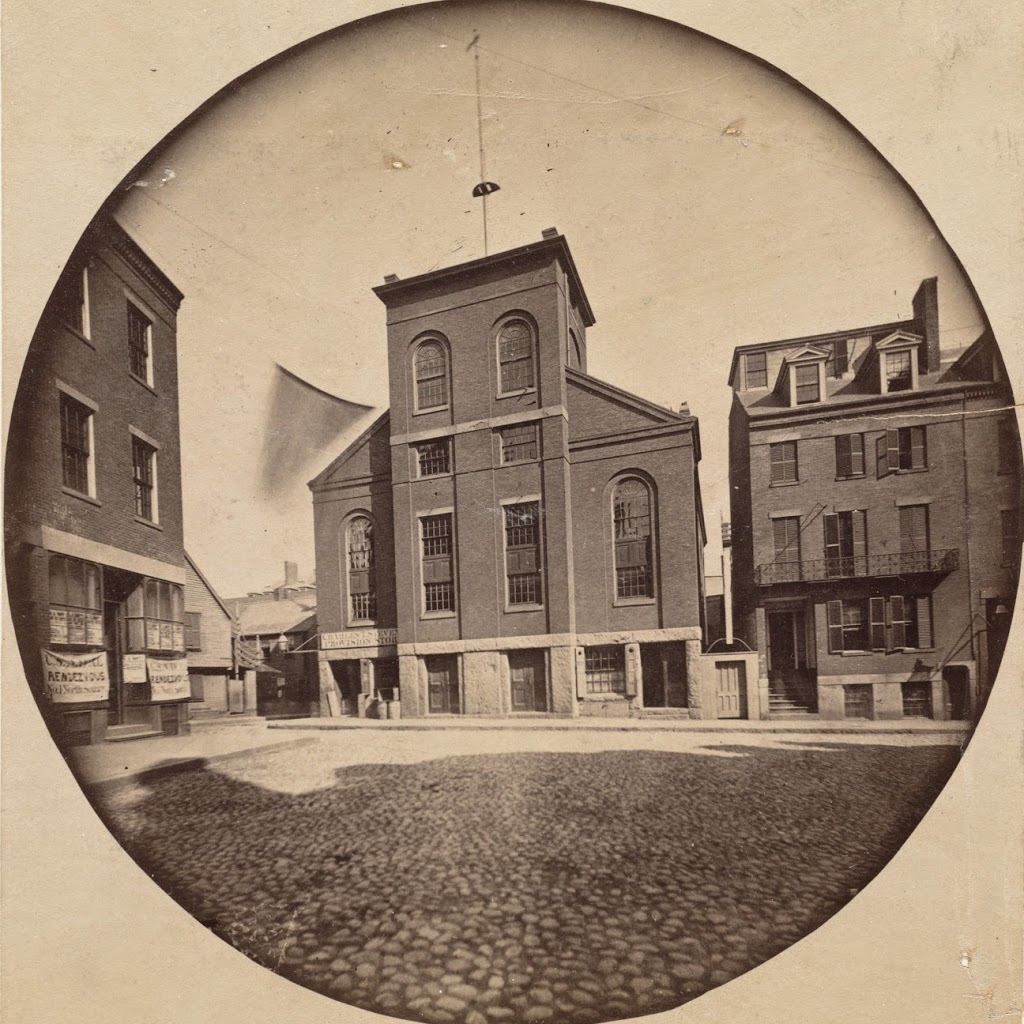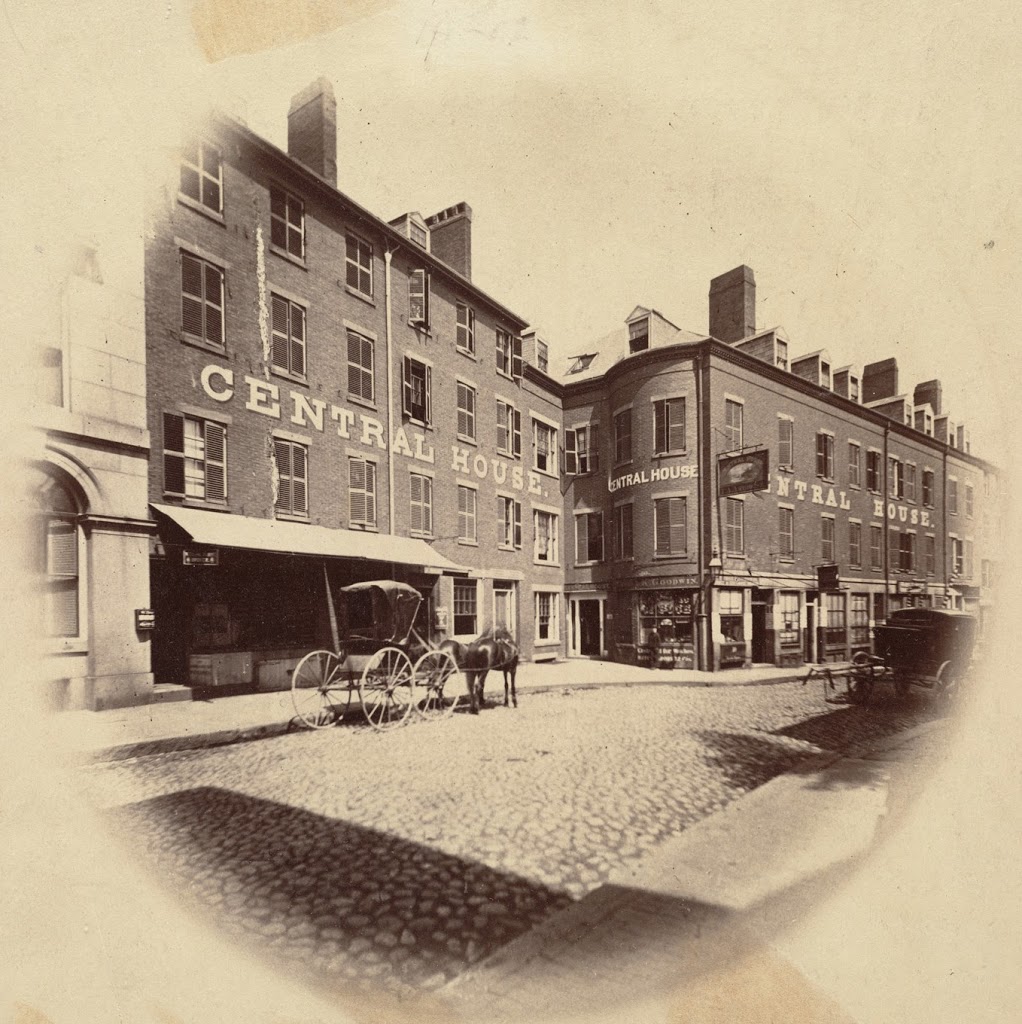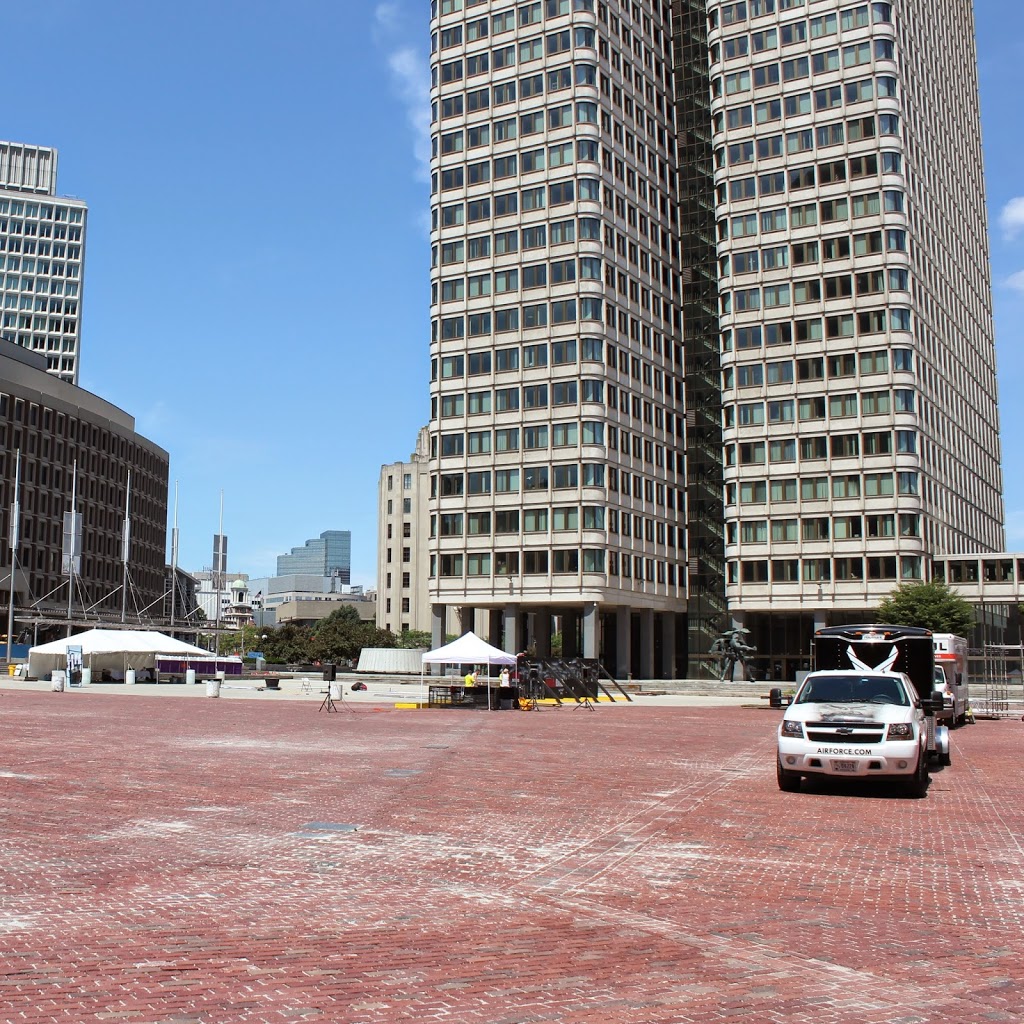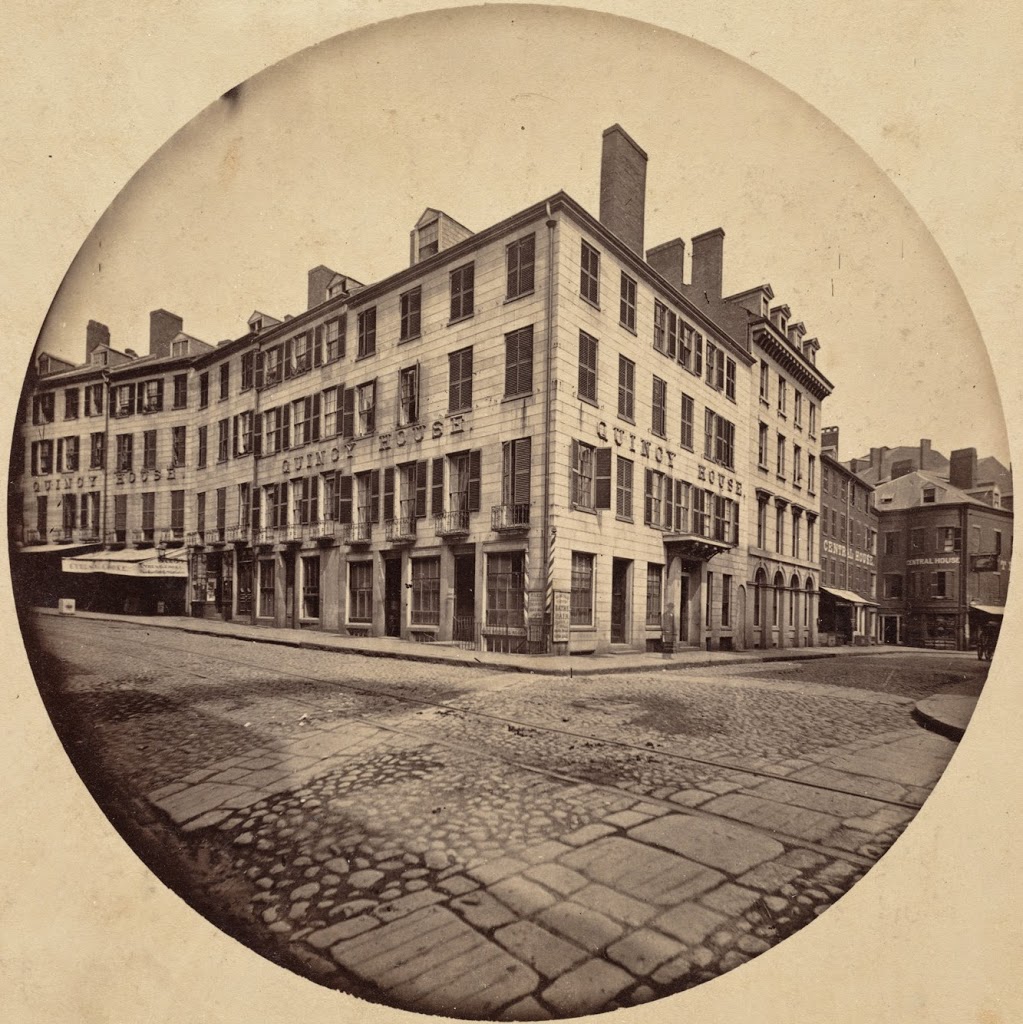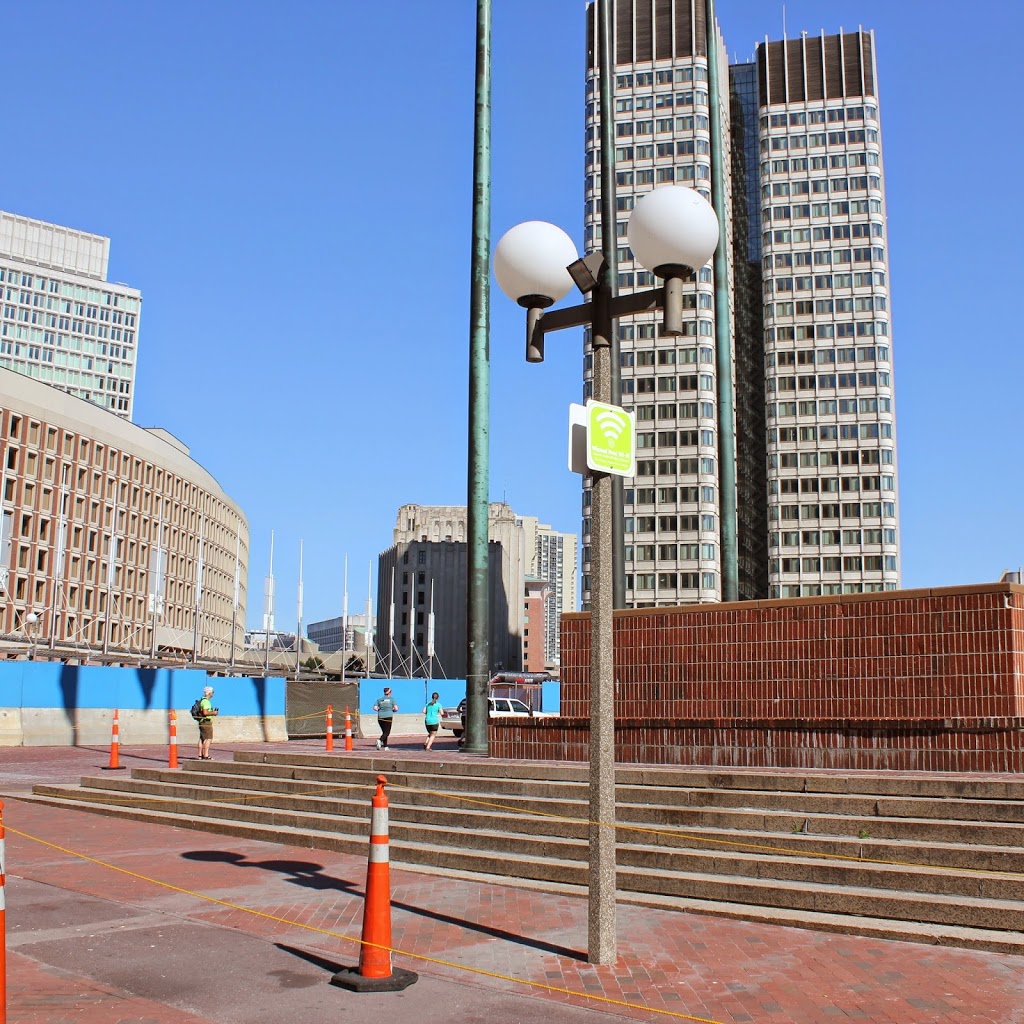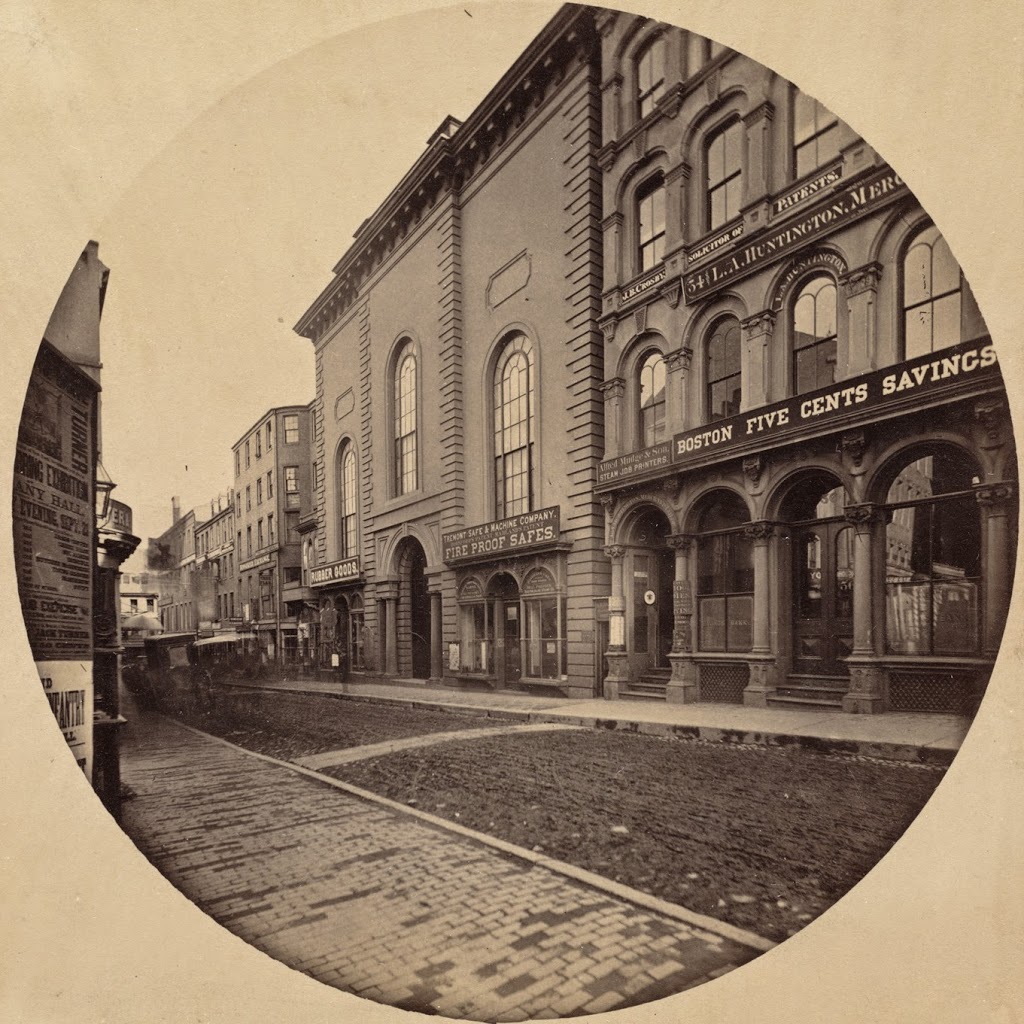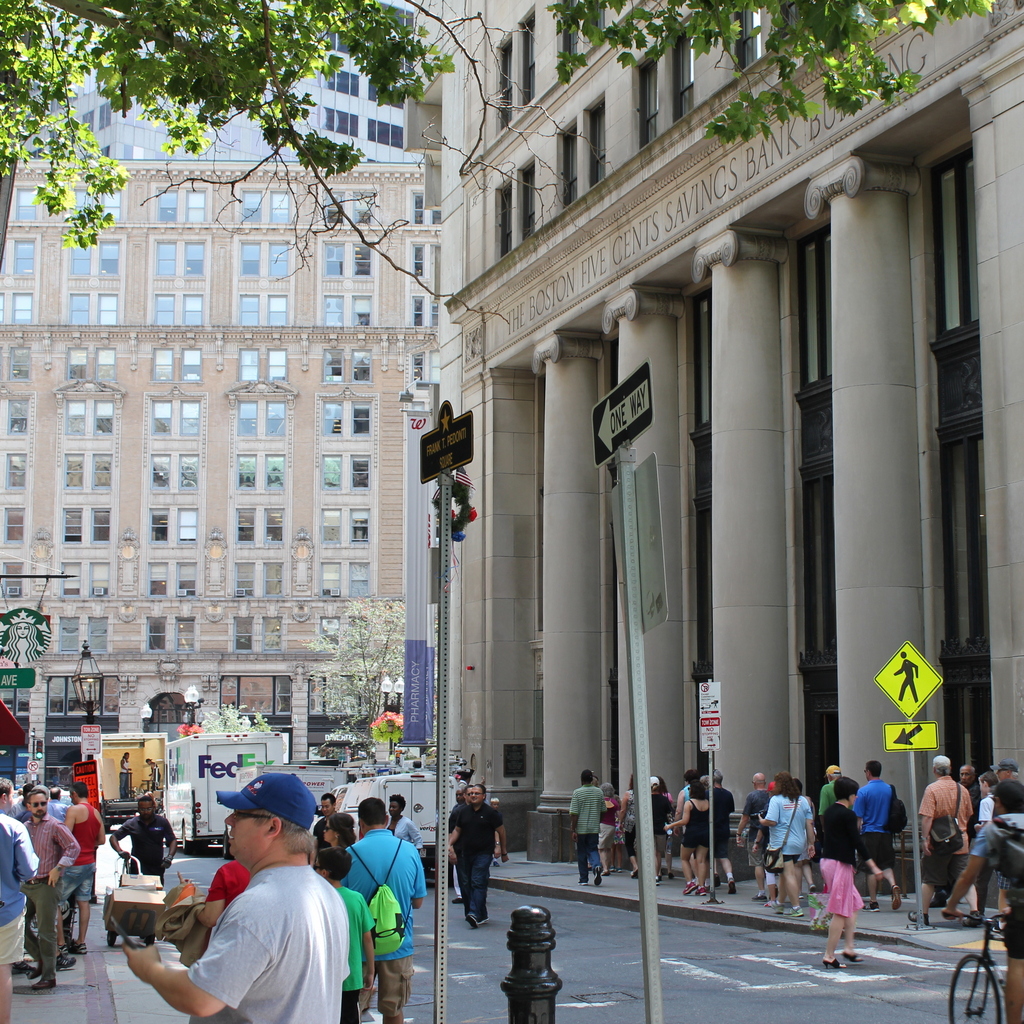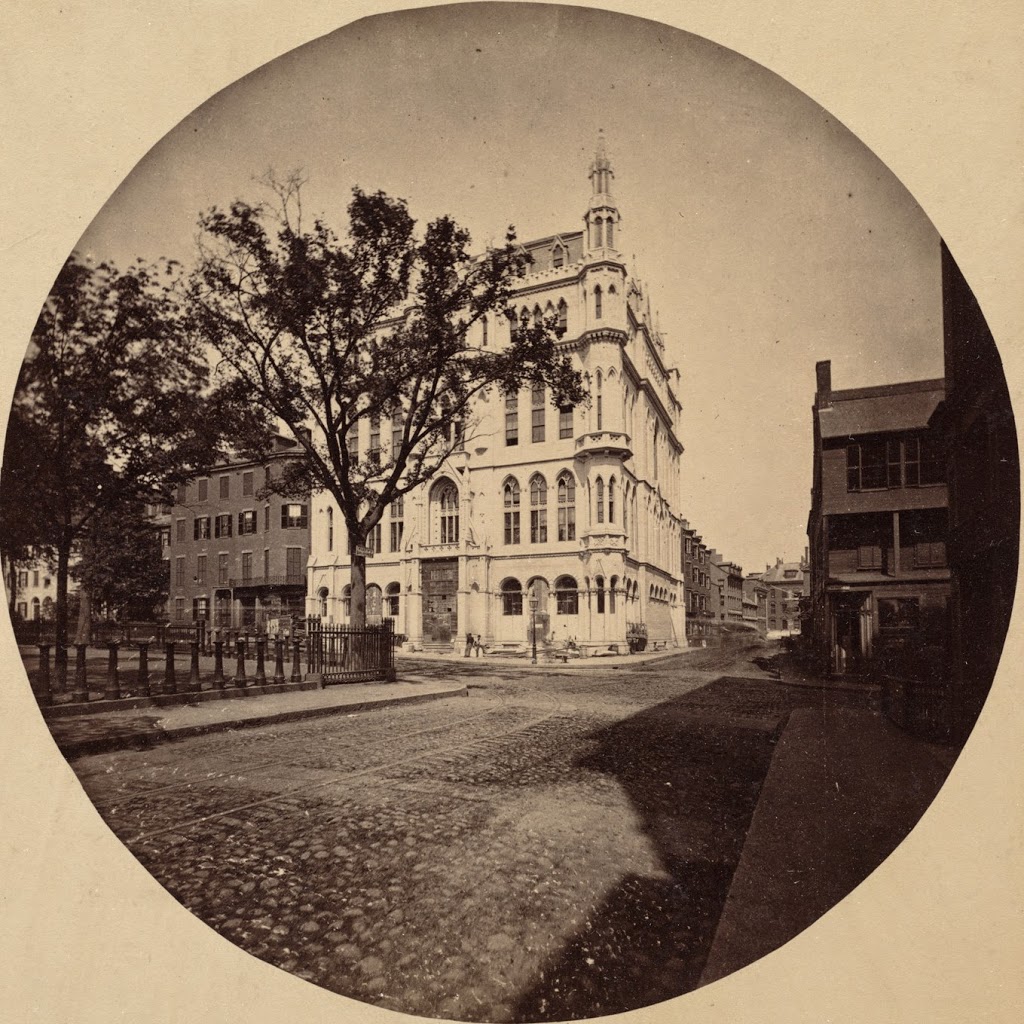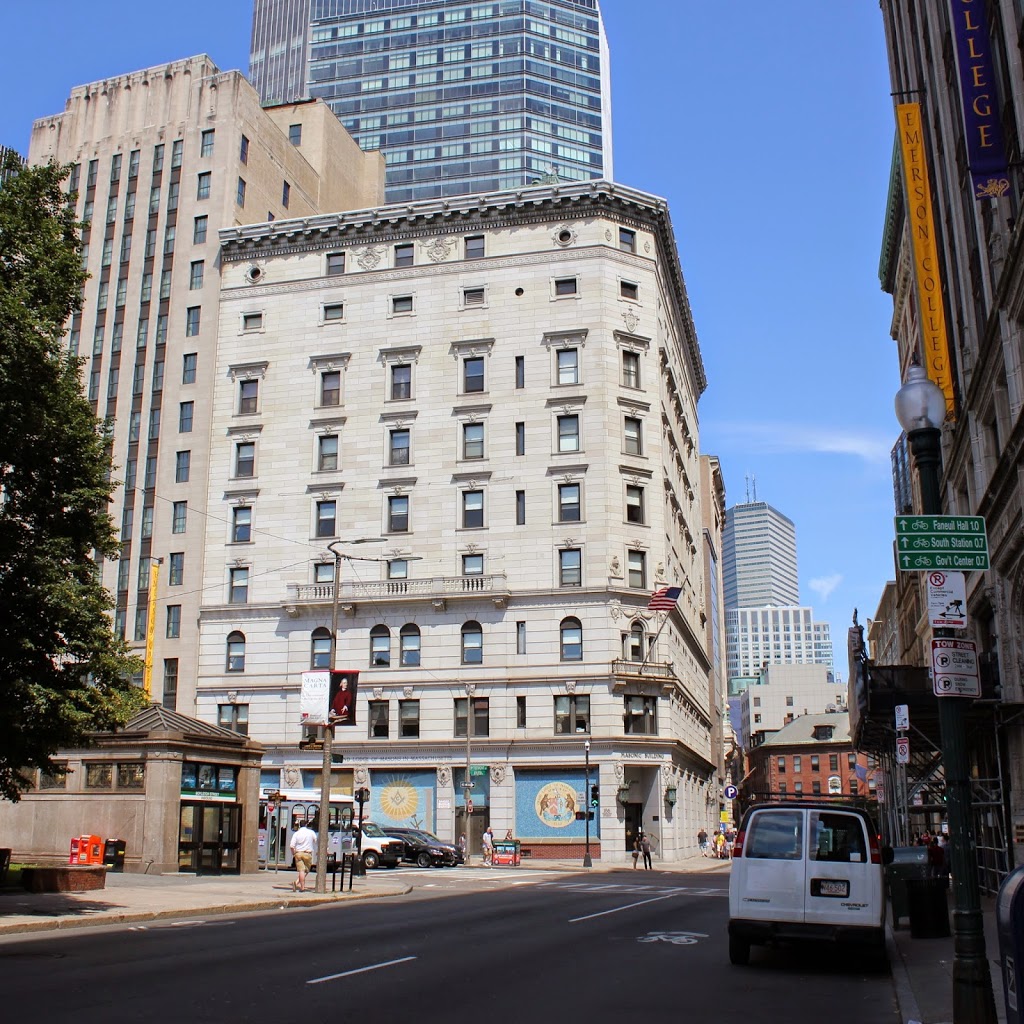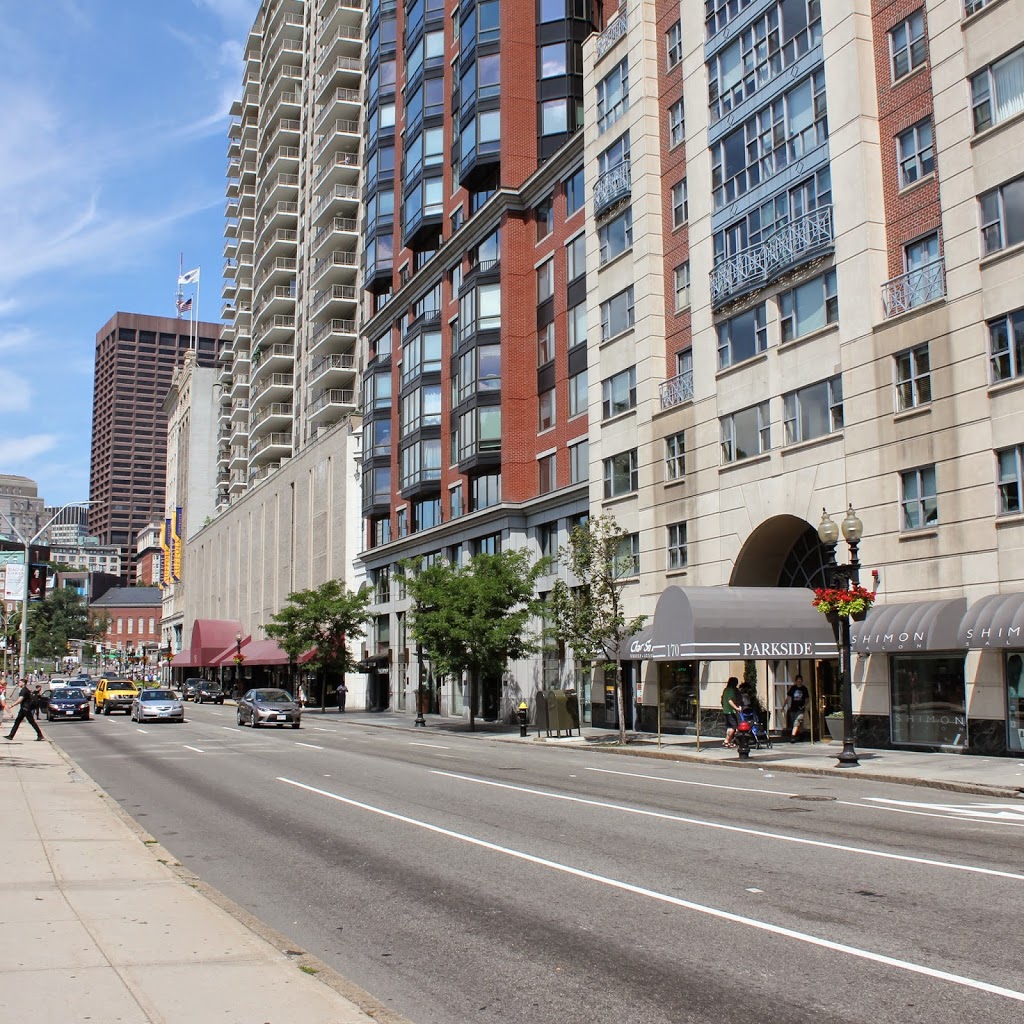Bethel Church at North Square, Boston, around 1860. Photo courtesy of Boston Public Library.
The church in 2014:
Built at North Square in 1833 by the Boston Port and Sailor’s Aid Society, this church provided Boston’s sailors with a place of worship, and also included a store to benefit sailors and their families. During the 19th century, several notable visitors attended the church, including Jenny Lind, Walt Whitman, and Charles Dickens. In the 1880s, the building was sold to the Roman Catholic Church, and was reopened in 1890, after some exterior renovations as seen in the 2014 photo.

